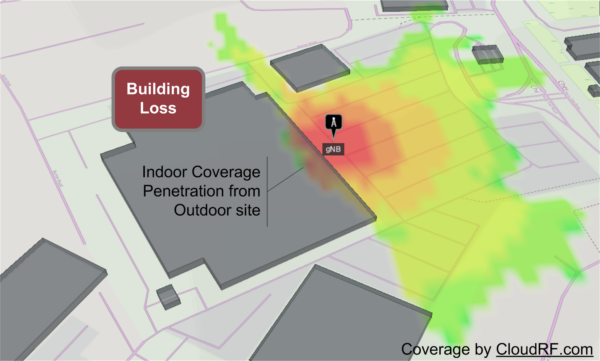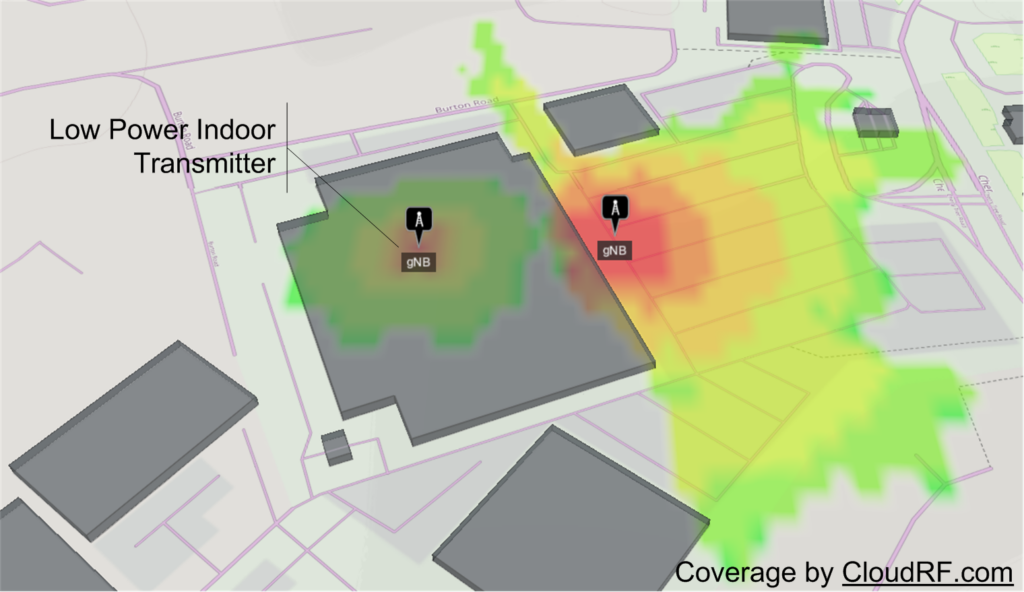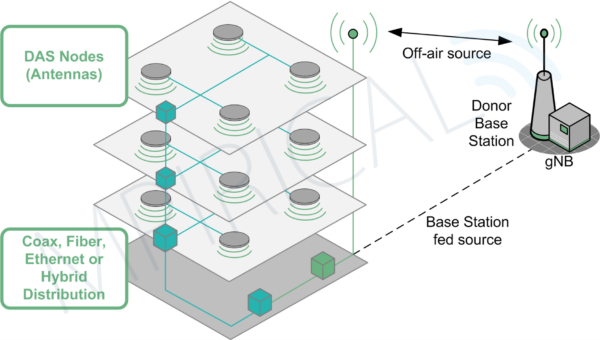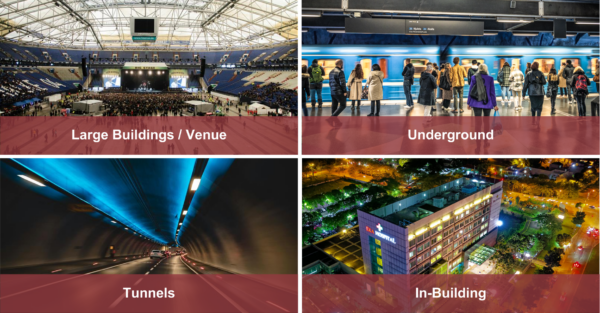
The Evolution of Connectivity – Exploring 5G DAS
As the world becomes increasingly interconnected, the demand for faster and more reliable communication networks is ever-growing. Enter 5G, the fifth generation of wireless technology, promising unprecedented speeds, reduced latency, and better connectivity. One critical component in realising the full potential of 5G is indoor solutions called Distributed Antenna Systems, or DAS. In this blog, we will delve into what 5G DAS is, its benefits, and its impact on various industries.
What is a Distributed Antenna System?
A Distributed Antenna System is a network of spatially separated antenna nodes connected to a common source via a distribution system that provides wireless service within a specific area. Essentially, DAS enhances the coverage and capacity of cellular networks, especially in large buildings, stadiums, airports, and venues where signal strength might otherwise be weak, as well as meet the capacity requirements of the users on the DAS system. Figure 1 illustrates an example of how signals from outdoor cell sites struggle to penetrate some buildings. This will depend on the frequency, power level, the building material, and associated building losses.

Figure 2 illustrates a simple coverage benefit from having one indoor DAS node. This signal will be influenced by the internal aspects of the building, as well as the material used, such as partition walls, office furniture, etc.

How Does 5G DAS Work?
DAS systems are not specific to 5G; in fact, many existing DAS systems are 4G, and many of these have already incorporated 5G low-band and mid-band frequencies into their solution. One downside of an existing 4G DAS solution is that they typically were not designed to support high-band 5G frequencies. This may not be a problem since not all service providers have 5G high-band allocation. However, those who do will be looking for DAS solutions which incorporate high-band DA nodes. Another important consideration is the device types in the DAS solution and their support of high-band operation.
Whilst there are many implementation options for DAS, the two key aspects are known as the signal source and the distribution system. The signal source is typically known as an “off-air source” or “base station fed source”; however, other direct options also exist. The off-air source, as its name suggests, repeats the signal from the donor cell into the DAS system. In contrast, the base station-fed source typically involves coax or fiber connectivity. The distribution system varies depending on the deployment and equipment required. Generally, these are based on coax, fiber, ethernet, or a hybrid of these. In most cases, the solution is designed to operate over a wide range of frequencies and some also allow for multiple service providers to utilise the same DAS solution.

Critical Benefits of 5G DAS
There are various benefits of using a 5G DAS system; these include:
- Enhanced Coverage and Capacity – 5G DAS can provide strong and consistent signal coverage in areas where traditional macro cells may struggle, such as underground facilities, large buildings, and crowded urban environments. This ensures that users experience seamless connectivity without dead zones or dropped connections.
- Improved Network Performance – By distributing the load across multiple antenna nodes, 5G DAS reduces network congestion, leading to higher data throughput and improved overall performance. This is particularly beneficial in high-density areas like stadiums and airports where thousands of users may access the network simultaneously.
- Scalability and Flexibility – 5G DAS offers scalability, making expanding network capacity and coverage easier as demand grows. The modular nature of DAS allows for adding new antennas and nodes without significant disruption to existing infrastructure.
- Enhanced User Experience – With reduced latency and increased reliability, users can enjoy real-time applications such as AR (Augmented Reality), VR (Virtual Reality), and high-definition video streaming without lag or buffering. This is crucial for industries relying on real-time data and applications, such as healthcare, gaming, and autonomous vehicles.
- Cost-Effective Solution – The initial deployment of 5G DAS may require investment, but the long-term benefits outweigh the costs. Improved network efficiency reduces the need for frequent upgrades, and the enhanced user experience can lead to increased customer satisfaction and retention.
Impact on Various Industries
5G DAS significantly enhance the deployment and performance of 5G networks in various challenging environments such as venues, underground spaces, tunnels, in-building scenarios, and private 5G networks. By deploying a series of small antennas throughout a designated area, 5G DAS ensures comprehensive coverage and maintains the high-speed and low-latency benefits of 5G.

Key benefits of 5G DAS across all these environments include:
- Scalability – Each solution can be scaled to meet the varying demands of different environments, from small buildings to large venues.
- Flexibility – DAS supports multiple frequency bands and can be integrated with existing network infrastructure.
- Energy Efficiency – DAS systems efficiently manage power consumption compared to traditional macro cell deployments, which benefits large-scale and underground installations.
- Reduced Latency – High-band 5G ensures low latency connections, which is crucial for real-time applications and services.
Conclusion
Integrating 5G and Distributed Antenna Systems represents a significant leap forward in wireless communication technology. By addressing the challenges of coverage and capacity, 5G DAS ensures that users can fully benefit from the advancements of 5G networks. As industries continue to embrace digital transformation, the importance of robust and reliable connectivity cannot be overstated. 5G DAS stands at the forefront of this evolution, paving the way for a more connected and efficient future.
In summary, 5G DAS is not just a technological advancement but a cornerstone in the infrastructure that will support the next generation of digital innovation and connectivity. Whether in healthcare, education, entertainment, transportation, or urban development, the impact of 5G DAS will be profound, driving progress and enhancing the quality of life for individuals and communities worldwide.
If you would like to learn more about 5G, our expert instructors provide live classroom and on-demand Indoor Mobile Radio for 4G and 5G course.
